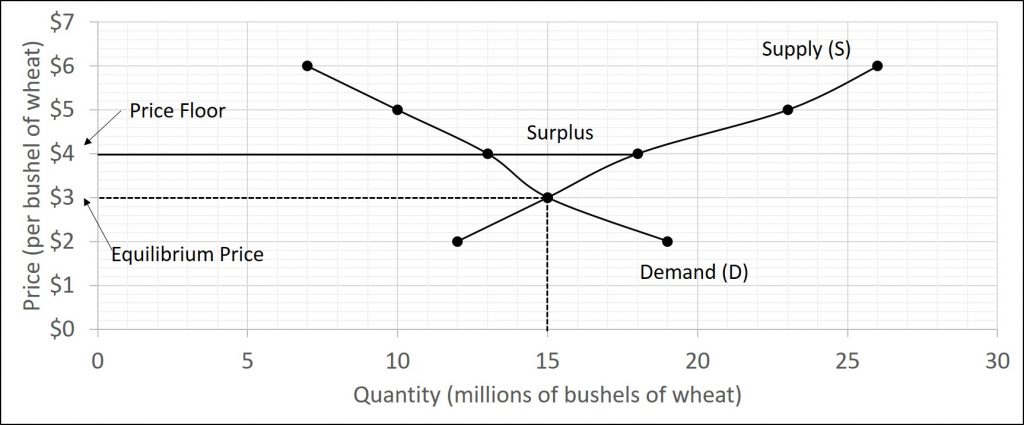Non Binding Price Floor Example

A price floor is the lowest price that one can legally charge for some good or service.
Non binding price floor example. The latter example would be a binding price floor while the former would not be binding. A non binding price floor is one that is lower than the equilibrium market price. Consider the figure below. A typical non binding offer includes the following components.
The equilibrium market price is p and the equilibrium market quantity is q. The price may be stated as a specific figure or a price range that the offeror is comfortable with. A price floor must be higher than the equilibrium price in order to be effective. A price floor is a government or group imposed price control or limit on how low a price can be charged for a product good commodity or service.
For example if the equilibrium price for rent was 100 per month and the government set the price ceiling of 80 then this would be called a binding price ceiling because it would force landlords to lower their price from. The potential purchaser must clearly indicate the price that they are willing to pay to acquire the target. A binding price ceiling is when the price ceiling that is set by the government is below the prevailing equilibrium price. Note that the price floor is below the equilibrium price so that anything price above the floor is feasible.
At the price p the consumers demand for the commodity equals the producers supply of the commodity. The equilibrium price commonly called the market price is the price where economic forces such as supply and demand are balanced and in the absence of external.



















